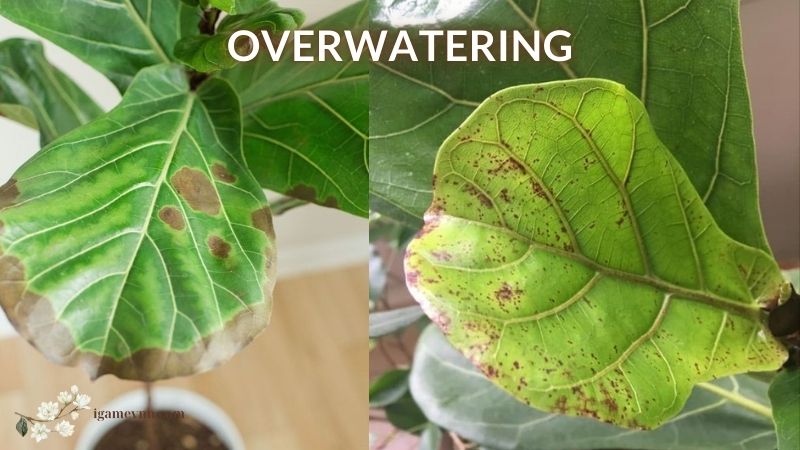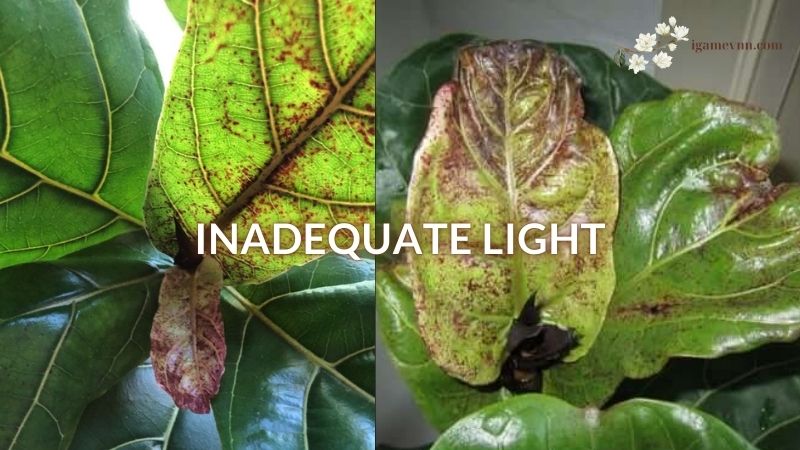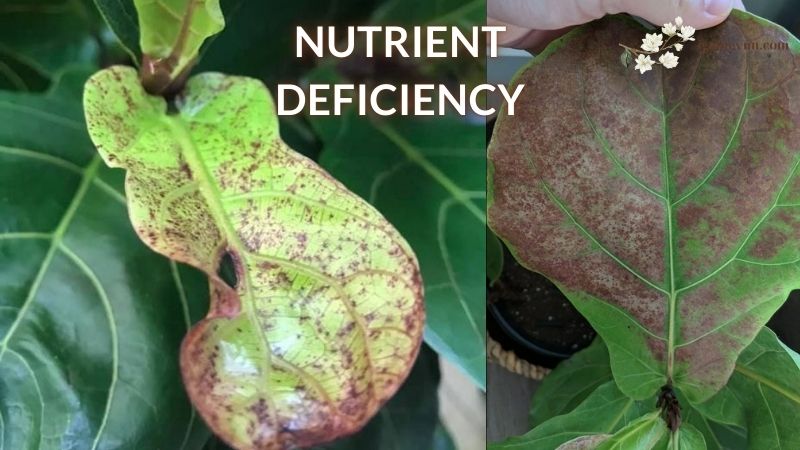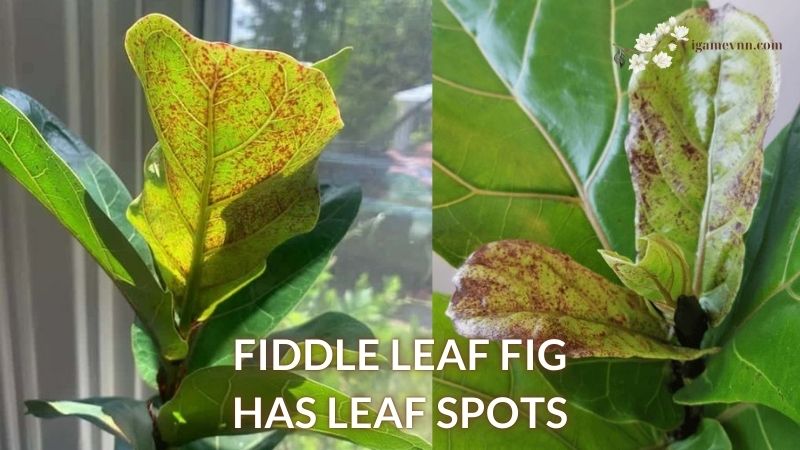Fiddle Leaf Fig (Ficus lyrata) is a popular indoor plant known for its large, glossy leaves and elegant appearance. However, it can be quite finicky, and many plant owners encounter issues with leaf spots. When your Fiddle Leaf Fig has leaf spots, it’s essential to identify the cause and take appropriate action to restore your plant to health. This article from Igamevnn delves into the various reasons why a Fiddle Leaf Fig has leaf spots and provides detailed solutions to each problem.
Table of Contents
ToggleFiddle Leaf Fig has Leaf Spots: Causes and Solutions
1. Overwatering
Symptoms: Yellow or brown spots, often accompanied by yellowing leaves.
Cause: Overwatering is one of the most common reasons a Fiddle Leaf Fig has leaf spots. When the soil remains waterlogged, the roots can suffocate and start to rot, leading to nutrient deficiencies and leaf spots.
Solution:
- Watering Schedule: Ensure the soil is well-draining and allow the top 1-2 inches of soil to dry out before watering again. Stick to a consistent watering schedule to avoid fluctuations that can stress the plant.
- Drainage: Use a pot with drainage holes and well-draining soil. Avoid letting the plant sit in water; always empty the saucer after watering.

2. Underwatering
Symptoms: Brown, crispy spots on the edges of the leaves.
Cause: When a Fiddle Leaf Fig has leaf spots that are brown and crispy, it’s often a sign of underwatering. Lack of water can cause the leaf edges to dry out and turn brown.
Solution:
- Thorough Watering: Water the plant thoroughly, ensuring that water reaches the root ball. Let excess water drain out to prevent root rot.
- Consistency: Maintain a consistent watering schedule. Check the soil regularly to ensure it’s neither too dry nor too wet.
3. Inadequate Light
Symptoms: Pale or yellowing leaves with dark spots.
Cause: Insufficient light can stress a Fiddle Leaf Fig, leading to pale leaves and dark spots. This plant thrives in bright, indirect sunlight, and inadequate light can cause various issues, including leaf spots.
Solution:
- Placement: Place your Fiddle Leaf Fig in a location with bright, indirect sunlight. A south-facing window with filtered light is ideal.
- Rotation: Rotate the plant occasionally to ensure even light exposure on all sides, preventing uneven growth and stress.

4. Low Humidity
Symptoms: Brown spots, especially at the edges of the leaves.
Cause: Fiddle Leaf Figs are native to tropical regions and prefer high humidity. When humidity levels are too low, the leaves can develop brown, crispy spots.
Solution:
- Increase Humidity: Increase humidity around your Fiddle Leaf Fig by misting the leaves regularly, using a humidifier, or placing the plant on a pebble tray with water.
- Grouping: Group plants together to create a more humid microenvironment.
5. Pest Infestation
Symptoms: Tiny, dark spots with possible webbing or sticky residue.
Cause: Pests like spider mites, aphids, or scale can cause a Fiddle Leaf Fig to develop leaf spots. These pests feed on the plant’s sap, causing damage and leading to spots and discoloration.
Solution:
- Inspection: Regularly inspect your plant for signs of pests, such as tiny insects, webbing, or sticky residue.
- Treatment: Treat infestations with insecticidal soap or neem oil. Ensure you cover both sides of the leaves and repeat the treatment as needed.
6. Fungal or Bacterial Infections
Symptoms: Irregular brown or black spots, often with yellow halos.
Cause: Fungal and bacterial infections are common reasons a Fiddle Leaf Fig has leaf spots. High humidity and poor air circulation can create a perfect environment for these pathogens.
Solution:
- Remove Affected Leaves: Remove and dispose of affected leaves to prevent the spread of infection.
- Improve Air Circulation: Increase air circulation around the plant by using a fan or ensuring the room is well-ventilated.
- Fungicide/Bactericide: Use a suitable fungicide or bactericide to treat the plant. Follow the instructions carefully to avoid further damage.
7. Temperature Stress
Symptoms: Dark spots or patches, especially if the plant is exposed to drafts or sudden temperature changes.
Cause: Temperature fluctuations and drafts can stress a Fiddle Leaf Fig, leading to dark spots on the leaves. This plant prefers stable, warm environments.
Solution:
- Stable Environment: Keep your Fiddle Leaf Fig in a stable environment, away from drafts, air conditioners, or heaters.
- Ideal Temperature: Maintain a temperature range of 60-75°F (15-24°C) for optimal growth.
8. Nutrient Deficiency

Symptoms: Various leaf discolorations, including spots.
Cause: Nutrient deficiencies can cause a Fiddle Leaf Fig to develop leaf spots. Lack of essential nutrients like nitrogen, potassium, or magnesium can manifest as discolorations and spots.
Solution:
- Fertilization: Fertilize the plant with a balanced, water-soluble fertilizer during the growing season. Follow the recommended dosage to avoid over-fertilization.
- Soil Quality: Ensure the soil is rich in organic matter and well-draining. Consider repotting the plant with fresh soil if it appears depleted.
General Care Tips
To prevent a Fiddle Leaf Fig from developing leaf spots, follow these general care tips:
- Clean Leaves: Regularly clean the leaves with a damp cloth to remove dust and improve photosynthesis.
- Adequate Drainage: Ensure the pot has adequate drainage to prevent root rot.
- Pest Control: Regularly check for pests and address any issues promptly.
- Pruning: Prune any damaged or diseased leaves to promote healthy growth.
- Monitor Plant Health: Keep an eye on your plant’s overall health and make adjustments to care as needed.
Conclusion
When your Fiddle Leaf Fig has leaf spots, it’s crucial to act promptly to identify and address the underlying cause. With proper care and attention, you can restore your plant to its full glory, enjoying its lush, vibrant foliage for years to come. By understanding the specific needs of your Fiddle Leaf Fig and providing a stable, supportive environment, you can prevent future issues and keep your plant healthy and thriving.

